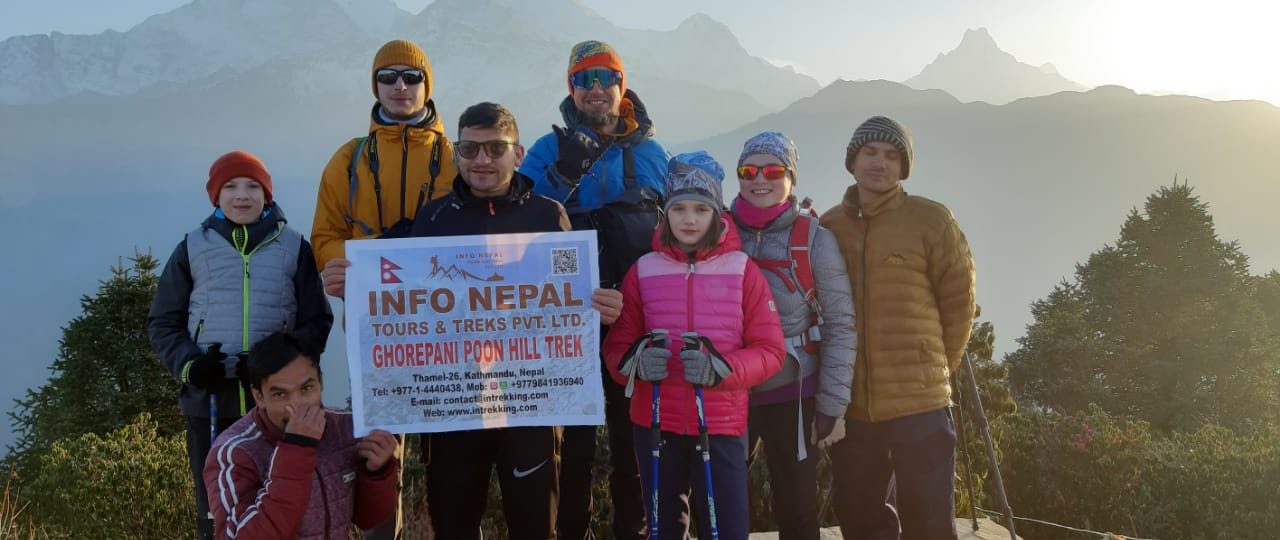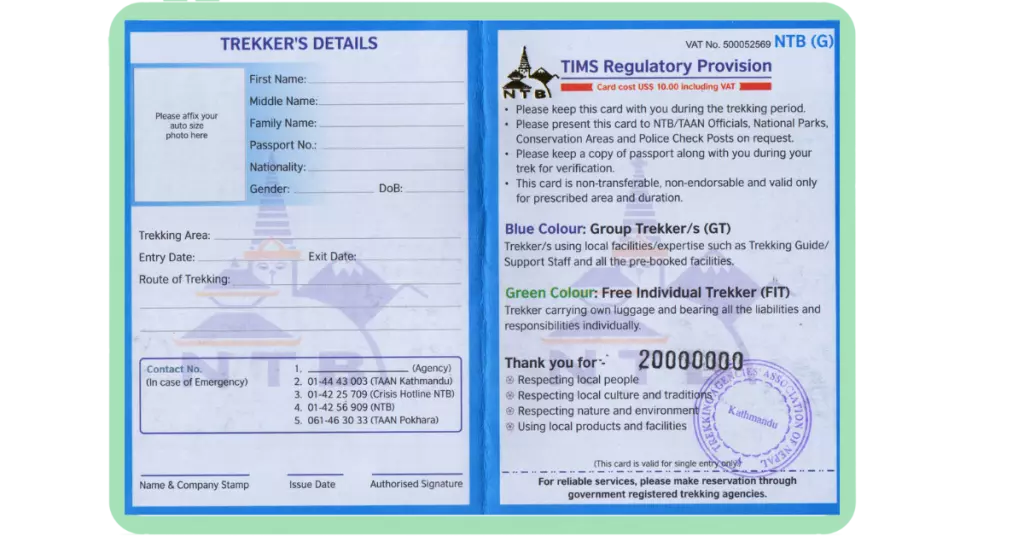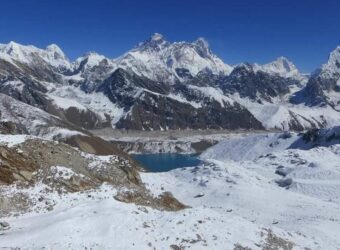

 Written By: Rajesh Neupane
Written By: Rajesh Neupane
Annapurna Base Camp Permit, Costs & Details
Enquiry Form
Table Of Content
Among the many trekkers on holidays in Nepal, a trek to the Annapurna Base Camp (4,130 m) is a dream come true for many foreigners. Known for its magnificent snow-capped peaks, serene lakes, and lush jungles, the Annapurna region is a popular tourist attraction for all kinds of travelers. However, in order to access the stunning views of the Annapurna region and experience the unique culture and people, you must obtain an Annapurna Base Camp Permit.
With Annapurna Base Camp Permit, you can cross between the different areas of the region with ease and explore the wonders of the Annapurna region to its fullest potential.
In this blog post, we will discuss the required Annapurna Base Camp Permit, essential documents, and other useful information that you need to know before embarking on your Annapurna Base Camp trek.
Also Read: Everything you need to know about Everest Base Camp Permit
Required Permits for Annapurna Base Camp Trek 2023
Are you planning to go on an unforgettable Annapurna Base Camp Trek in Nepal? If yes, you need to know about the necessary permits and documentation you need to obtain before embarking on your journey.
For trekkers hoping to make this journey, there are two main types of Annapurna Base Camp Permits that need to be obtained before heading out.
- Annapurna Conservation Area Project (ACAP) Permit
- Trekkers’ Information Management System (TIMS) Permit
It is important to remember that you must have all the required Annapurna Base Camp Permit before you set off on your trek. In addition to this, you should also make sure that you are fully prepared for the Annapurna Base Camp Trek and have the necessary items and equipment with you.
1. Annapurna Conservation Area Project (ACAP) Permit
The Annapurna Conservation Area Project (ACAP) is a government-run project that was initiated in 1986 to protect and conserve the biodiversity of the Annapurna region. The project has been immensely successful in preserving the natural beauty of the area while keeping it accessible to trekkers and tourists. The project has also been instrumental in promoting sustainable tourism in the region.
The ACAP permit is required for access to the entire Annapurna region, including any trails and restricted areas. The permit is valid for one person and can be used for one entry only.
By granting this permit, the ACAP will be able to support its conservation efforts and ensure the future of the region. Additionally, this Annapurna Base Camp Permit also serves as a reminder that it is essential to protect and preserve the environment, as well as ensure that trekkers and tourists can explore the region responsibly.
2. Trekkers’ Information Management System (TIMS) Permit

Another essential Annapurna Base Camp Permit that trekkers need while trekking in Annapurna Base Camp is the Trekkers’ Information Management System (TIMS) Permit. The TIMS Permit is applicable in all the different trekking regions of Nepal. However, each region requires its own TIMS Permit.
The TIMS Permit is a mandatory requirement of the Nepal government and it helps to keep a record of all trekkers in the region. This record is used for keeping track of the trekkers’ movements and activities during the time of emergency, such as natural disasters or accidents.
Furthermore, the TIMS permit is an important document that is used to protect the safety of trekkers in the Annapurna region. It also helps in preventing overcrowding in the popular trekking trails as well as ensures that trekkers adhere to the rules and regulations of the trekking region. The permits are issued by the Nepal Tourism Board (NTB) and can be obtained from recognized trekking agencies.
The following are popular trekking destinations in Annapurna Regions that can be explored with Annapurna Base Camp Permit:
- Mardi Himal Trek — 13 Days
- Annapurna Circuit Trek —17 Days
- Ghorepani Poon Hill Trek — 5 Days
- Annapurna Sanctuary Trek — 12 Days
Documents Required for Annapurna Base Camp Permit
The following are the documents that you need to obtain Annapurna Base Camp Permit:
- A valid passport
- 2 passport sized photos
- A photocopy of your original visa
- A copy of your trek route & itinerary
These are the basic documents you’ll need to get if you’re planning on visiting the Annapurna Base Camp. Make sure you have all these documents before you set out on your journey.
Once you have all the necessary documents, you can apply for the Annapurna Base Camp Permit at the Nepal Tourism Board. You can then finally set out on your journey to the Annapurna Base Camp. The experience will be well worth the effort you put into getting the documents!
Annapurna Base Camp Permit Cost
Now that you know about the required Annapurna Base Camp Permit let’s discuss more these permit costs.
1. Annapurna Conservation Area Project (ACAP) Permit Cost:
- Cost: 3000 NPR (Approx. $30 USD) per person.
- Valid for: 60 days from the date of issue.
2. Trekkers’ Information Management System (TIMS) Permit Cost:
- Cost: 2000 NPR (Approx. $20) per person.
- Valid for: 60 days from the date of issue.
Both permits are essential for access to the Annapurna Base Camp region and need to be obtained prior to the start of your trek. It is important to note that the cost of the permits is subject to change, so be sure to check the latest prices before your trek.
Where can you obtain Annapurna Base Camp Trek Permit?
The Annapurna Base Camp Trek Permit can be obtained at the Nepal Tourism Board office at Pradarshani Marg, Kathmandu or from the Tourism Board office in Pokhara. To obtain the permit for Annapurna, travelers need to fill out an application form, pay the required fees, and provide the necessary documents.
If you are planning to go on an Annapurna Base Camp trek and don’t want to worry about getting the permits yourself, then you can book your trek with us! We will take care of all the permits, itineraries, food, and accommodations for you. All you have to do is contact us on Viber at (+977) 9841936940 and we will take care of the rest.
Book your Trek to Annapurna Base Camp

